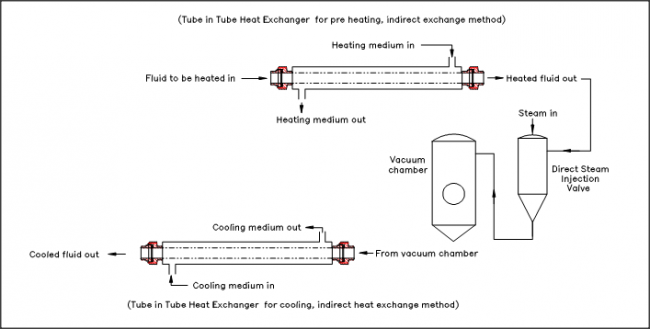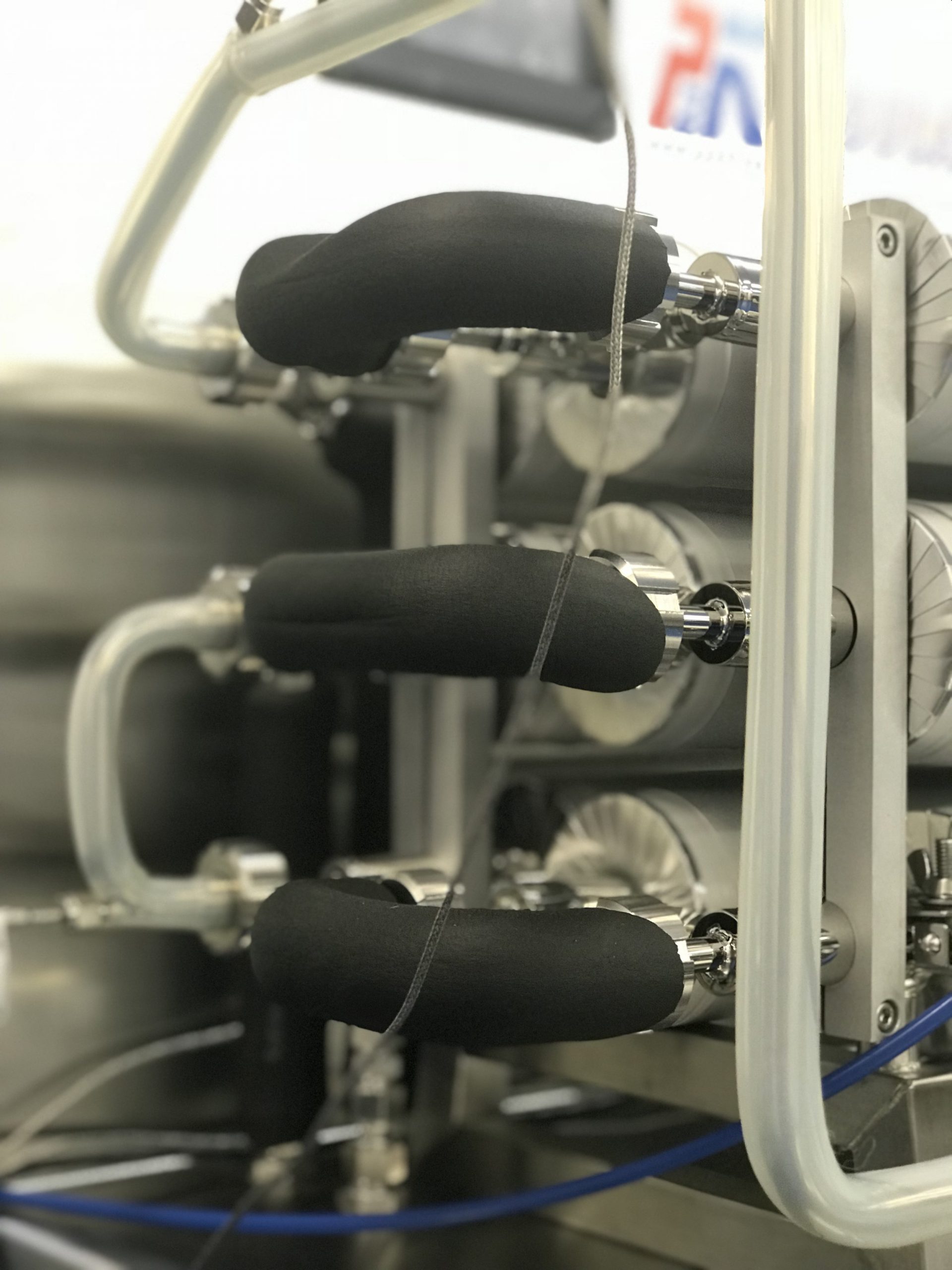Tubular Heat Exchangers : An Introduction
The transfer of a heated or cooled fluid to another fluid via an internal and external tube known as a Tube in Tube heat exchanger. The heated or cooled fluid never comes into contact with the fluid to which it is heating or cooling. The inner tube carries the fluid to be heated or cooled; the outer tube carries the heated or cooled fluid. This is known as the indirect heat transfer method.
The fluid in the outer tube enters the tube from the opposite end of the tube to the Fluid in the internal tube. This is known as counter flow or contra flow.
Tube in Tube heat exchangers are also used in the pre heating and cooling sections where a direct steam injection heat exchanger is needed. The heat exchangers on the pre heat and cooling sections is by the indirect heat transfer method as mentioned above, but the final heating is done by injecting steam directly into the product. This is known as the Direct Steam Injection, or Direct Steam Infusion.
Illustration above shows indirect method for pre heat and cool with DSI for final heating.
The advantage of Tube in Tube heat exchangers over Plate heat exchangers is the low maintenance, high viscosity products, products with particulates and easy cleaning. Generally, they need more space due to the reduced heat exchange surface area compared to Plate heat exchangers.
Powerpoint International manufacture small footprint machines and all of the types of heat exchangers, Tube in Tube heat exchangers, Plate heat exchangers and direct steam heat exchangers.
Powerpoint Internationals machines are the same small footprint regardless of Plate heat exchangers or Tube in Tube heat exchangers design.


Features/Benefits:
- Working temperatures up to152°C
- Design pressures to 20 bar available
- All hygienic fittings
- Corrugated internal tube to give added heat transfer area
- High particulate capacities
- Can handle high viscosity product
- Robust
- Easy cleaning
- Low maintenance
- Can achieve Reynolds tubular flow
- Meets the required industry standard for CIP cleaning. Minimum 1.5 meters per second velocity
Food industry users:
- Beverages
- Sauces
- Ice cream mixes
- Baby foods
- Mayonnaise
- Dairy
- Soy
- Health drinks
- Puddings and deserts

